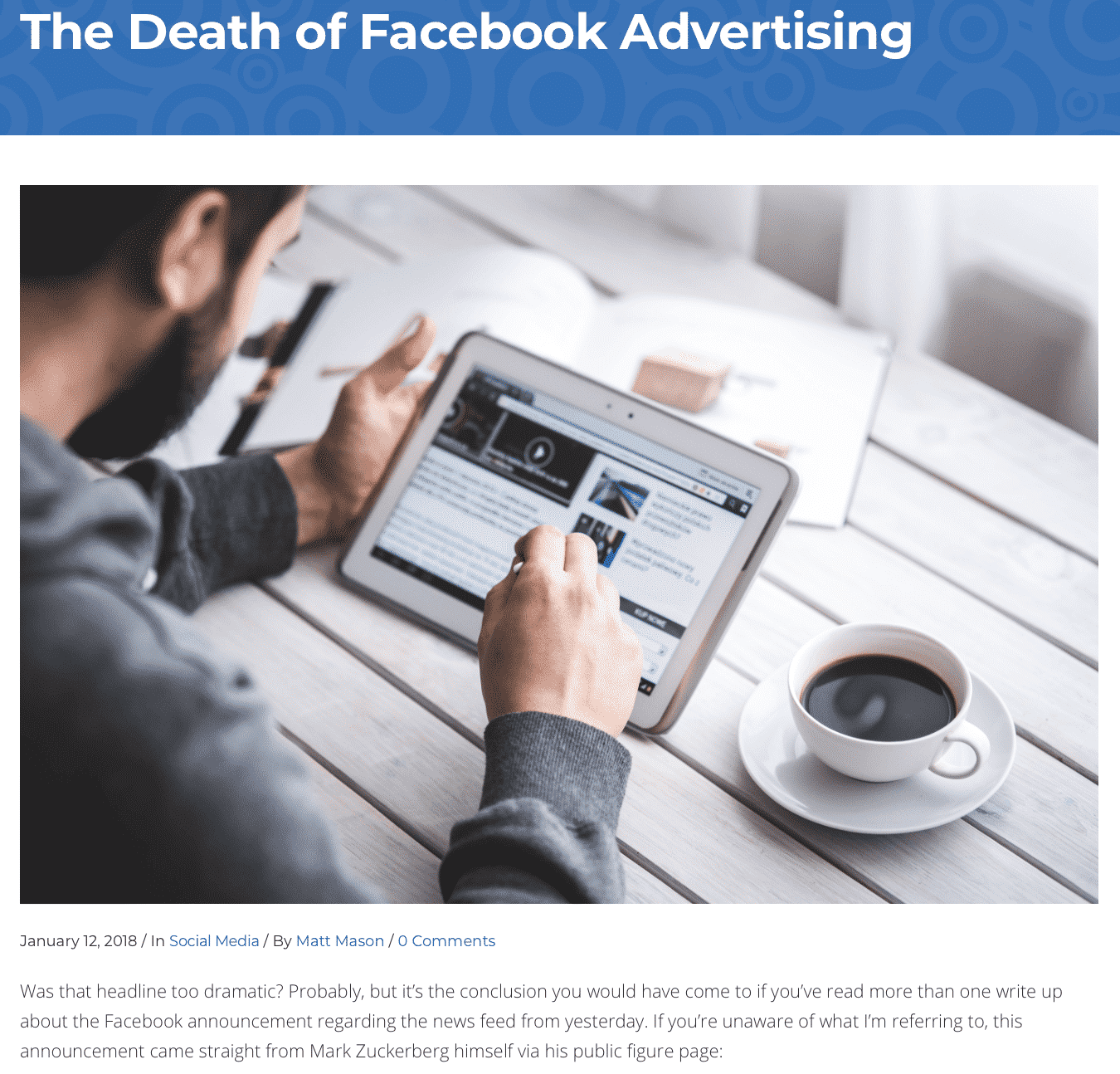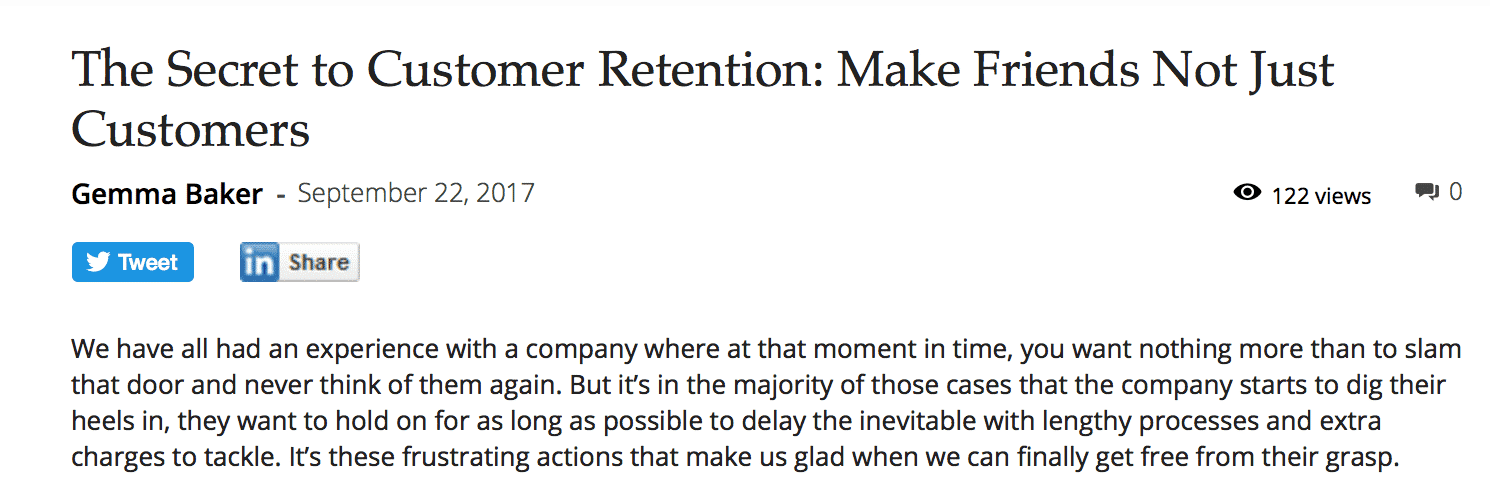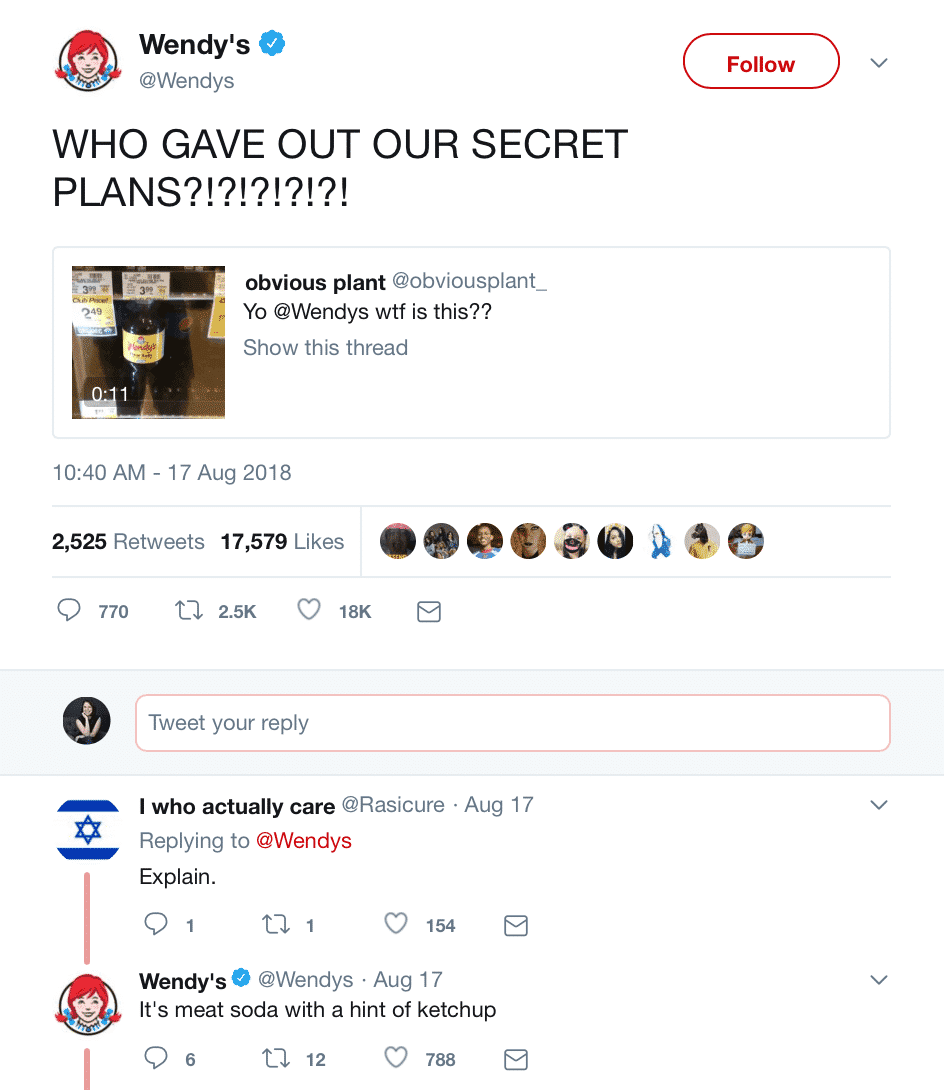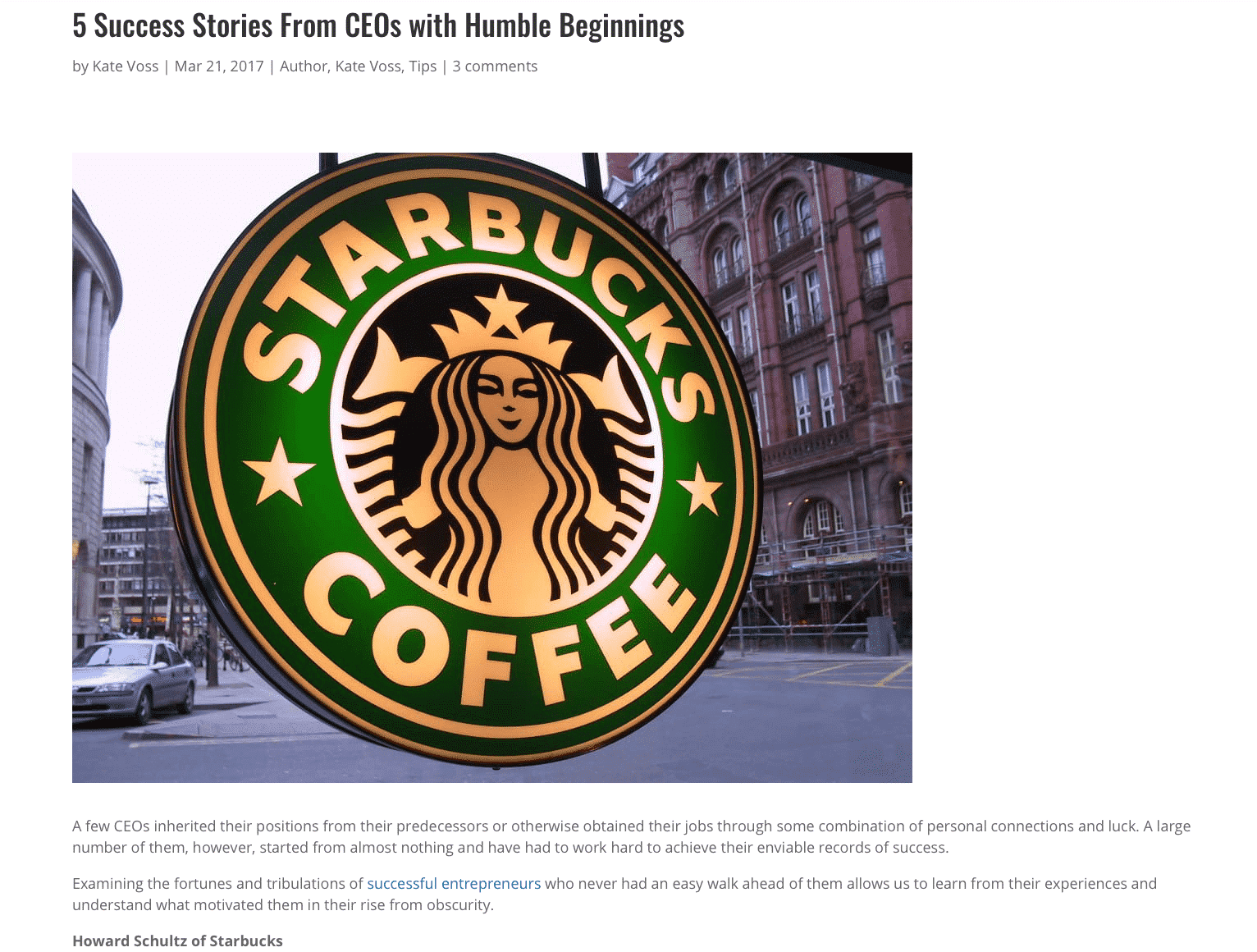5 Types of Appeals to Use for Buzz Marketing
by Ana Gotter • August 20, 2018
I write a lot of content for a lot of brands, and I’d be rich if I got a penny every time a new potential client got on a call, commissioned a blog post, and said “you can make that go viral, right?”
Ah, if only I could.
Brands who want to go viral are often interested in using buzz marketing to leverage social shares and to generate a lot of conversation. They want all eyes on them and their content.
The best buzz marketing is a perfect storm of “right place, right time, right content”, but with the “right strategy”, you can get a lot of the value of buzz marketing without needing to actually go viral.
In this post, we’re going to go over how you can structure your buzz marketing campaigns for success, along with looking at five distinct appeals and strategies that can get you closer to the results you’re looking for.
What is Buzz Marketing?
Buzz marketing campaigns are designed to get people talking about your brand and what you’re doing. You don’t just want shares on your recent blog post– you want people saying “dude, you need to read this” to their friends.
Buzz marketing can work with any and all types of marketing, including content marketing, guerrilla marketing, and social media marketing. I’ve even seen it happen as a result of an email marketing campaign.
Buzz marketing goes beyond building brand awareness and relationships, it’s also a great way to spotlight your business in impactful short term spurts.
5 Types of Buzz Marketing Appeals
For buzz marketing to work, you need to get people talking about you. And, to get people talking about you, you need to give them something they’ll be excited to talk about.
There are 5 different types of “appeals” you can use that will immediately grab user interest and increase the likelihood of getting them talking and sharing.
1. The Controversial
Want to get people talking immediately? You can’t go wrong with diving head first into controversy. The more taboo, the better, you just have to be careful with how you approach it.
People love to talk about controversy. It feels a little scandalous and it’s sure to get people riled up enough to talk about you– one way or another.
This why you see posts declaring that “Facebook is dead” every few years. It’s a “controversial” (if inaccurate) idea that is sure to get people to click and then talk about it.

For controversial content to work, you need to do a few things correctly. You need to make sure that your stance is well-researched and that you defend it well in the post, or people will be coming after you with pitch forks and torches.
It’s also essential to explain why your controversial stance matters. You get bonus points if you can explain why most people don’t agree with you…and why they’re wrong.
2. The Secret
You don’t have to look hard to find examples of how people use “secret” content or insider tips to leverage views and jumpstart conversations. Everyone has FOMO and we all want to feel like we’re in the know–knowing big secrets is included in that.

So what counts as “secret” content? Here are a few examples:
- Sneak peeks of upcoming content, but only peeks. Tieks uses this strategy to announce new colors of their flats before pictures are released, which typically generates excitement amongst customers.
- Behind-the-scenes content, or facts about you, your employees or how things run when the customers aren’t there. This encourages customers to feel like they’re really getting to know the “real you.”
- “Secrets of the industry” that have helped you become successful. If you saw Mark Cuban promising to give a talk on the secrets of managing money, wouldn’t you want to jump at the chance to get tickets?

Many people feel like brands or individuals who are successful have a lot of “secrets” they want to know. Offering to share those secrets is a sure-fire way to get people interested in what you’re doing and talking about it.
3. The Bizarre
There’s a fire tornado that’s whipping through California as I write this post and I saw it shared on Facebook four different times before my boyfriend called to tell me about it. This is a bizarre, outlandish thing that’s happening and everyone is talking about it.
Can you do the same with the content for your business?
Bizarre appeals often work best for extreme campaigns, businesses with a sense of humor and marketing styles like guerrilla marketing.
Imagine walking through New York, for example, and seeing a charging bull statue wearing a pair of enormous boxer briefs. You’d likely take a picture, share it on social and start talking. Why is it here? How ridiculous is this? Have you seen this?
Another good example is BlendTec’s “Will It Blend” YouTube campaign, which has been around for more than a decade.
These videos feature a “scientist” using the blender to obliterate everything from iPhones (which made me want to cry) to Justin Bieber CDs (which made me want to cry tears of joy). It’s so ridiculous and outrageous…but clearly it works.
4. The Hysterical
If you’re able to create something hysterical, people are going to be over the moon talking about how funny you are. This will help your brand seem more relatable and fun–in addition to getting you all that buzz.
I can’t tell you how many people I’ve heard reference Allstate’s “Mayhem Man” commercials, which so funny that they’ve become a staple in pop-culture.
Need another example? Wendy’s social media has almost become more popular than the actual fast food chain. With their endless stream of hilarious (if savage) takedowns of hecklers and competitors alike, people actually follow their channel just to see what they’ll say next.

Every six months or so Wendy’s does something so ridiculous that actual articles are written about it. Talk about buzz marketing in action!
5. The Inspirational
We all love a feel-good story and content that is truly inspirational will generate the buzz you’re looking for. Inspirational content fills us with hope, but it also supercharges the emotional side of our brains that makes a more lasting connection.
As a result, your content will stick in the minds of viewers and they’ll be more likely to share or discuss it with other people.

Great inspirational content is more than “feel-good” quotes or empty cliches.
Instead, be real and tell actual stories of how you got to where you are, how the business overcame hardships, or how you came to create your business (and it’s mission).
Buzz Marketing Tips and Tricks
As many brands know and many more will find out, buzz marketing doesn’t mean that your campaigns are just automatically going to take off at the snap of your fingers. If it did, I wouldn’t have a job.
Choosing the right appeals and the right strategies will be an important first start, but you can also use other tactics to improve the likelihood of success and maximize your results. For example:
- Amplify content early on through PPC. To generate sufficient buzz for your campaigns, you need visibility, and that won’t happen on its own. Using platforms like Facebook Ads or LinkedIn Ads to promote your content will help it get a lot of views and earn more social proof. Since social proof is a powerful force of it’s own, this is well worth the financial investment.
- Reach out to influencers you know. Send the post to friends in the industry and ask them to share if they find it relevant, especially if they’re influencers who have a lot of social clout. People are a lot more likely to share your content if they know you, rather than being one of the dozen messages asking for attention.
- Share it everywhere. Include it in your Social media, email and blogs for maximum exposure. Again, early visibility is important, but you never know when the right person will see it and when it could take off, so don’t be afraid to link back to it at a later date. It all adds up.
Is Buzz Marketing Right for My Brand?
If your buzz marketing campaigns take off, there are obviously plenty of benefits to be had. A lot of people are talking about you and your campaigns, which builds up brand awareness and (hopefully) credibility.
A word of advice here, however. Sometimes, marketing means taking risks, but you should always take calculated risks.
Doing something so extreme that there’s a high risk of driving people away isn’t worth doing. I saw one young marketer sever a lot of ties because he ran an email campaign that was intentionally rude and obnoxious and then told people “they didn’t get it” when they called him. Sure, he got a lot of attention–but it wasn’t the kind he wanted.
Understanding your audience and peers can help you to avoid this, which you definitely want to do. After all, once something picks up that kind of steam, it’s pretty much out of your hands.
What do you think? Have you ever used buzz marketing for your business? Which buzz appeals have you used? Share your thoughts and questions in the comments below!




